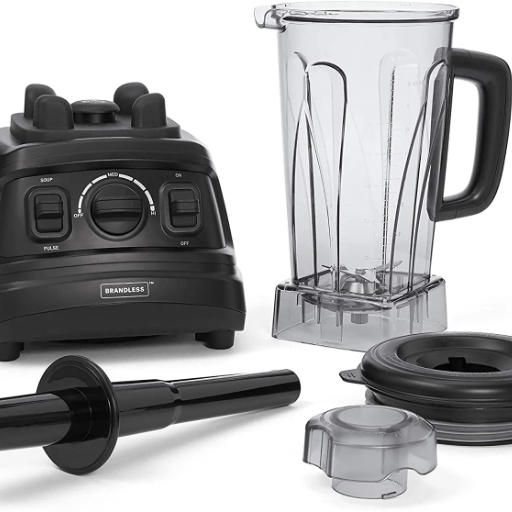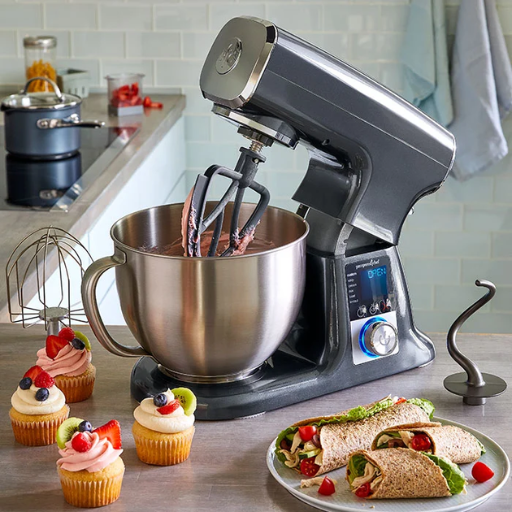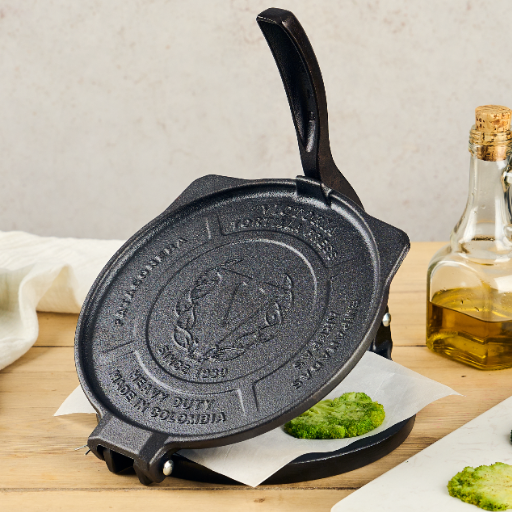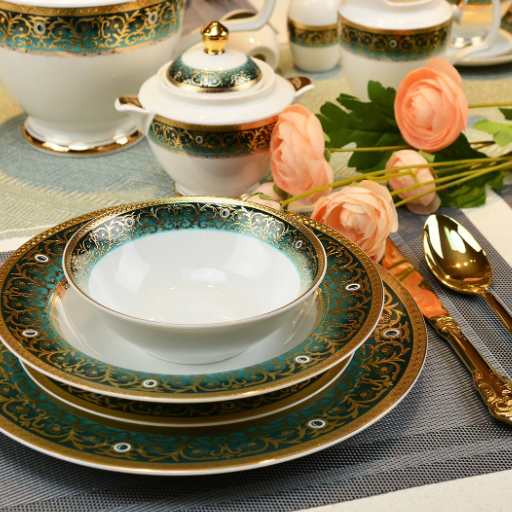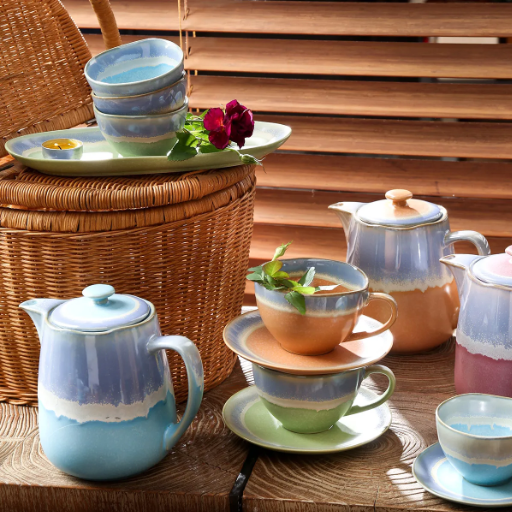In the top tier of a kitchen’s most needed appliances is the electric cooker which will outmatch other devices due to its portability and diverse cookery options. But due to the size, energy consumption, technology, brand, or price of the cooker, selection can be overwhelming. This complete guide attempts to help you make a decision by simplifying everything there is to know about electric cookers. It walks you through understanding the most common features and functions and even explains all the different types, providing their advantages, to give you the power to invest wisely. From the home cook looking to enhance their cooking experience by investing in the right equipment to the professional chef looking for dependable tools, the guide contains all the information you need to cater to your lifestyle and choices.
What is an Electric Cooker and How Does it Work?
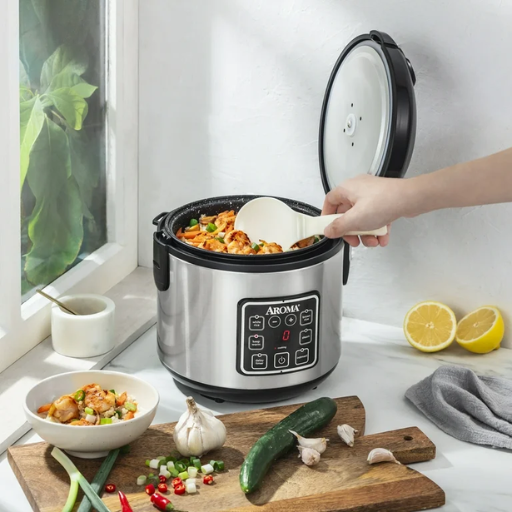
An electric cooker, often referred to as an oven or simply a kitchen oven, is an apparatus intended to prepare food with electricity as the power source. An electric cooker consists of various components, for example: heating elements, temperature probes, and even different modes of cooking (boiling, baking, or grilling). An electric cooker converts electric energy to heat through the heating elements and then evenly distributes the heat to the cooking surface or the oven chamber. Electric cookers such as these are ideal for absolute beginners in cooking, considering the features of saving power, guaranteeing safety, and being easy to use. In addition, the devices are quite appreciated because of their steady cooking conditions throughout the entire cooking process.
Understanding the Basics of Electric Cooking
Elements like the nickel-chromium alloy make the main electric heating component of an Electric Cooker which transforms electric energy to heat energy. The electric energy to heat energy conversion efficiency is above industry standards. Thermostats and temperature sensors also monitor the heat to provide automation so that the oven is not over- or under-cooked. Most modern electric cookers come equipped with displays and programmable features. Digitally enabled modern cookers let users set parameters for exact time and temperature for different cooking modes. Additionally, the external and internal heat dispersions are minimized and efficiency is maximized by the use of advanced insulation materials which prevent the heat from escaping.
For user safety, Electric cookers are designed with an Auto shut-off, child lock controls, and residual heat indicators. These features improves the safety of the user as well as reduce the repetitive wear of the appliance. To increase user flexibility and convenience, many electric cooking appliances have been integrated with smart technologies for remote control and monitoring through mobile applications. The combination of electric devices and mobile applications has revolutionized cooking, achieving consistent data-based cooking results with very little effort.
Components of an Electric Cooker Explained
|
Component |
Description |
|---|---|
|
Heating Element |
Converts electrical energy into heat for cooking. |
|
Thermostat |
Regulates and maintains the desired cooking temperature. |
|
Control Panel |
Houses buttons, knobs, or touch controls for operation. |
|
Cooktop Surface |
Durable, heat-resistant surface for placing cookware. |
|
Timer Functionality |
Allows precise cooking time management. |
|
Insulation |
Minimizes heat loss and energy consumption. |
|
Safety Sensors |
Detect abnormalities and prevent overheating or short circuits. |
|
Power Cord |
Supplies electricity to the cooker from the outlet. |
|
Indicator Lights |
Shows operational status (e.g., power, temperature, or timer). |
|
Smart Connectivity Module |
Enables remote control and monitoring via mobile applications. |
|
Ventilation System |
Prevents internal overheating by dispersing heat. |
|
Removable Parts |
Includes components like drip trays for easier cleaning. |
|
Energy Efficiency Rating |
Measures power consumption and operational efficiency. |
How Electric Pressure Cookers Function?
Electric pressure cookers use heat, pressure, and control systems to break down basic foods while cooking. This leads food not to lose its nutritional content. Their main working principle is the same for all of them, using an electric heating component to bring the temperature of the sealing cooking chamber up to a point where the water inside boils and creates steam. The steam accumulated then increases the pressure build along with increasing the boiling point of water to over 212°F (100°C) therefore food can be cooked in a fraction of time of other more traditional methods.
Electric Cooker vs Gas Stove: Which is Better?
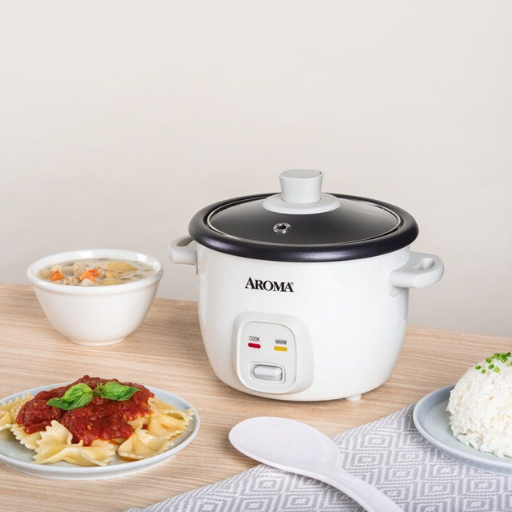
When comparing electric cookers to gas stoves, one would have to decide based on their personal need. Gas cookers are usually preferred for fork as they provide instant heat, which makes them more preferred in stir frying and searing food. Previously mentioned gas stoves can also come in handy if there is pressure to keep spending low due to the low cost of natural gas. On the other side, they do not provide as good control over the temperature, therefore making electric worlds’ advanced safety features better in a more modern kitchen.
Advantages of Using an Electric Cooker
- Energy Efficiency
Induction cookers have proven to be the most effective option when it comes to energy-efficient cookers. Comparatively, induction cookers allocate 90% of their power towards the saucepan, whereas gas stoves heat up only 40-50%. The difference reduces utility expenses in the long run.
- Temperature Precision
Most saucing and slow cooking tasks need consistent results and controlled heat, which requires accurate semi-permanent temperatures. Many modern electric cookers now include advanced temperature controllers, enhancing precision.
- Safety Features
Electric cookers typically include safety enhancements like automatic shut-off, child-lock settings, and residual heat indicators. These features reduce the risk of accidents, making them a safer choice for families with children or busy households.
- Ease of Cleaning
The smooth, flat, ceramic and induction electric cooktops are easier to clean than other types of stoves. Unlike gas stoves that have removable parts which require disassembly to clean, the electric stoves can simply be wiped clean. This decreases the amount of effort needed to maintain the stove over time.
- Environmental Benefits
When paired with renewable energy sources, electric cookers have a smaller carbon footprint compared to gas stoves. They do not rely on the direct combustion of fossil fuels, thereby reducing greenhouse gas emissions if electricity comes from sustainable sources like solar or wind.
With these benefits, electric cookers meet the needs and expectations with minimal safety risks while being efficient and clean.
Disadvantages of Electric Cookers Compared to Gas Stoves
- Dependence on Electricity: In areas with unstable electrical grids or frequent outages, this reliance can be a significant drawback. Due to your area losing power, electric cookers become difficult to use.
- Slower Heating Time: Electric cookers tend to have slower heating response times compared to gas stoves. The need to preheat the cooking surface adds another delay in already slow processes.
- Higher Energy Costs: In some regions, the price linked to a kWh of electric cooking is much more than the price for a therm of natural gas, leading to greater operational expenses. Depending on local energy prices, cooking via electricity may be more expensive than gas.
- Electric Cookers or Stoves: Drawbacks: Gas stoves offer instant and exact heat control. Users can change the intensity of the flame in seconds. Electric cookers may not have this level of precision, for example in older models without induction technology.
These disadvantages underscore the practical challenges users may face with electric cookers as compared to traditional gas stoves.
Choosing the Right Type of Electric Cooker for Your Needs
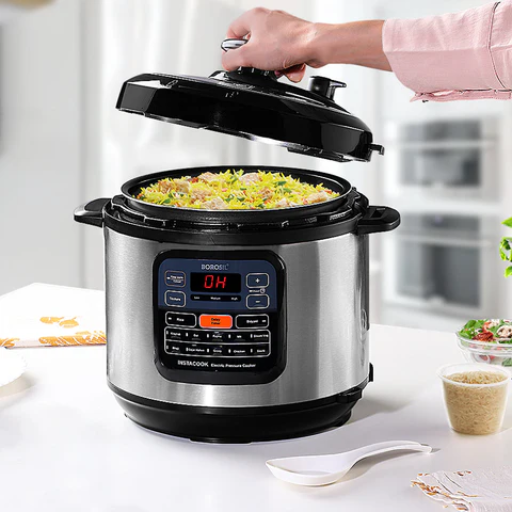
When choosing the right type of electric cooker for your needs, consider the following factors:
- Cooking Habits – Induction cookers are the best option for quick and precise cooking as they respond faster and more efficiently to heat. For baking or slow cooking, look for convection ovens with multiple functions.
- Energy Efficiency – Induction cookers are the best option when it comes to value for your money. Standard electric coil or ceramic cookers often consume more energy over time.
- Budget – While induction cookers are more expensive to purchase initially, electric coil and ceramic cookers are cheaper to purchase, but more expensive to operate.
- Safety Features – Problems such as burns and overheating can be avoided by using models with cool-touch surfaces and automatic shut-off features. Evaluate these aspects if the cooker matches your lifestyle.
Meeting these requirements will make certain that the cooker you choose will suit your lifestyle and improve your cooking experiences.
Differences Between Slow Cookers and Electric Pressure Cookers
|
Key Point |
Slow Cookers |
Electric Pressure Cookers |
|---|---|---|
|
Primary Function |
Low, slow cooking of food |
Fast cooking under high pressure |
|
Cooking Speed |
Several hours (4-10 hours) |
Minutes to around an hour |
|
Ideal For |
Stews, soups, braises |
Quick meals, rice, hard-to-cook foods |
|
Temperature Control |
Low and high settings |
Precise, adjustable programming |
|
Energy Efficiency |
Lower operating energy consumption |
Higher energy usage per session |
|
Required Attention |
Minimal supervision needed |
Requires monitoring during pressure use |
|
Versatility |
Limited to certain cooking techniques |
Multiple functions (e.g., sauté, steam) |
|
Pressure Mechanism |
Does not use pressure |
High-pressure cooking mechanism |
|
Safety Features |
Normally basic safety options |
Advanced safety mechanisms included |
|
Preheating Time |
None |
Time needed to pressurize the cooker |
|
Maintenance |
Simple cleaning and maintenance |
More components to clean and maintain |
|
Size and Portability |
Compact and lightweight |
Typically bulkier and heavier |
|
Noise During Operation |
Virtually silent |
May release occasional hissing sounds |
|
Cost Range |
Generally more affordable |
Higher upfront cost |
|
Adaptability for Recipes |
Suited for slow-cook specific recipes |
Adapts to various cooking styles |
Multi-Cookers: Are They Worth It?
While multi-cookers are an essential kitchen tool for buying versatile, space-saving appliances, their value depends on one’s cooking priorities. Modern consumers say multi-cookers are mostly appealing because they incorporate different functionalities within a single device, as they can pressure cook, slow cook, sauté, steam, and even make yogurt. Rather than inefficiently utilizing numerous kitchen appliances, multi-cookers make everything much simpler by incorporating multiple cooking methods, saving counter and storage space.
Nonetheless, this expenditure might be better suited for people that have large families or cooks on a regular basis. Empirical data suggest that multi-cooker users stand to gain between 30% and 70% of the cooking time when using multifunctional devices as opposed to traditional methods. Savings in energy expenditure can also be achieved through the use of multi-cookers, since faster cooking directly translates to less energy used. There are well-known multifunctional devices that make everything from basic soups to advanced dishes like risottos and even desserts which show their multifunctionality.
Top Features to Look for in an Electric Cooker

- Programmable Settings
Do check for models that come with slow cook, pressure cook, steam, and sauté as these provide a variety of recipes for cooking.
- Capacity
Electric cookers come in different sizes with capacities of 3-quart for individuals to 8-quart for larger families or batch cooking. It is best to choose a size that best fits your household.
- Durable Construction
Stainless steel or non-stick inner pots are ideal for durability and ease of cleaning. Ensure the materials are food-safe and resistant to wear.
- Safety Features
Press release functionalities and lid-locking features with overheating safety precautions turn the appliance into a fireproof device, making modern operation safe during use.
- Energy Efficiency
Select models which have energy-saving options as well as those with quick heating functions as they consume less electricity and are effective.
Importance of Programmable Settings
Equally important is the ability to customize temperature controls and the duration of cooking; these, along with start time scheduling, make modern appliances more flexible and refined. Programmable settings were specifically designed to enhance the ease of use in appliances such as slow cookers, pressure cookers, multi-cookers, or any other devices that can work with recipes as complex as but not limited to rice, beans, and various meats. Additionally, they automatically adjust cooking cycles to ensure optimal texture and flavor which are paramount to the dish’s success. These settings are often paired with digital displays and other modern technologies like mobile apps, allowing for real-time interaction with the device where in some cases, remote operation is even possible. With this degree of automation and customization, appliances designed for smart homes or professional kitchens have higher fuel-saving functionalities and power consumption efficiency with the aid of automated functions.
Temperature Control and Its Benefits
How to Properly Maintain Your Electric Cooker?
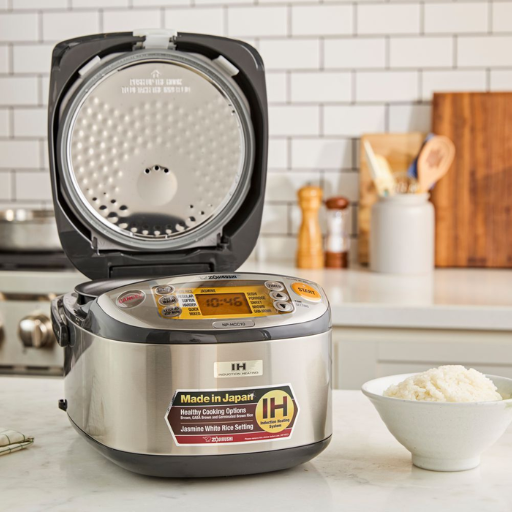
- Every Regular Cleaning: Avoid the rough non-heat proof cleaner and sponge, these and similar materials will damage the cookers. Only use warm damp clothes.
Over time surface and control knobs tend to attract grease and food residue. Make sure you wipe them after each use. - Inspect the Elements Regularly: Always check the heating elements periodically. Make certain they are not worn out or damaged. Replace any or all of the parts that are malfunctioning.
- Avoid Placing Unreasonably Heavy Cookware: To ensure the equipment endures use, balance the weight placed on burners or inside the ovens as much as possible. Do not use unreasonably heavy cookware.
- Examining the Power Cord: Look over the power cord for any fraying or other signs of damage. If any wear is detectable, replace the cord to mitigate electrical risks.
- Conduct Scheduled Maintenance: Follow the servicing suggestions in the manufacturer’s book and complete all scheduled maintenance tasks religiously.
- Employ Appropriate Cooking Utensils: Always make sure that the cooking utensils used have flat and stable bases to ensure good anchorage with the burners for the efficient transfer of heat as well as prolonging the life of your cooker.
Safe and dependable operation are guaranteed with rigorous attention to these practices and sustained optimization of your electric cooker’s performance.
Cleaning Tips for Electric Cookers
You will not be able to operate an electric cooker safely and efficiently without proper cleaning. The following cleaning instructions will address all sections of the cooker in detail, emphasizing all components.
- Unplug the Cooker Before Cleaning
In general, the first step in safely using any appliance is to always cut power before any form of cleaning. Doing so ensures the user’s safety while preventing the appliance from suffering damage.
- Wait for the Cooker to Cool Down
After using an appliance, it is good practice to allow all surfaces to cool off. While sensitive surfaces like ceramic or glass cooktops can easily get damaged from cleaning, getting scrubbed while hot can cause burns.
- Clean the Surface Regularly
Employ soft cloths, warm water, and detergents to ensure the surfaces are clean and free from grime after every use. Furthermore, the use of harsh chemicals graded above surface-level appliances is absolutely forbidden, as is the use of abrasive sponges. In terms of tougher stains, using paste made of baking soda will greatly aid in scratching away residues.
- Remove and Clean Burner Plates or Drip Pans
If your electric cooker has removable burner plates or drip pans, detach them and soak them in warm, soapy water for 15–20 minutes. For grease and food debris buildup, scrub gently with a non-abrasive sponge, rinse thoroughly, and dry before reinstalling.
Doing these intensive cleanings periodically will help you maintain the hygiene, safety, and operational efficiency of your electric cooker, thus extending its service life.
When to Replace Your Electric Cooker
Understanding the need to replace your electric cooker is critical in ensuring safety measures, efficiency, and proper performance of the device in your kitchen. There are some indicators that generally frame the weaker side of a particular device. Perhaps one of the most notable issues is the consistent temperature mismanagement—heating elements not getting sufficiently hot, as well as other recurring malfunctions. In some cases, these problems stem from old and faulty electrical parts that need to be replaced. If the appliance is starting to require frequent repairs, a new device should be obtained, as the cost will be lower down the line.
Another major issue to consider is energy efficiency. In comparison to current models, older electric cookers tend to require a greater amount of energy. This particular type of appliance ought to be frequently replaced, as it saves funds on electricity, decreases environmental pollution, and helps aid Mother Nature. Along with that, evidence of an appliance’s physical wear and tear such as rust, cracks, or other seals may also negatively impact the safety and effectiveness of the device.
Reference Sources
-
Energy-Efficient Electric Cooking and Sustainable Energy Transitions: Focuses on the energy efficiency of electric pressure cookers (EPCs) compared to traditional stoves. Highlights that EPCs use significantly less energy and reduce carbon emissions.
-
Systematic Review of Electric Cooking: Analyzes trends in electric cooking research from 1993 to 2023. Identifies emerging areas like solar e-cookers, IoT integration, and behavioral change interventions.
-
Solar Cooking Vessel Design: Reviews advancements in solar cooker vessel designs for better efficiency and CO2 mitigation. Discusses the economic and environmental benefits of solar cooking.
Frequently Asked Questions (FAQs)
Q: What is the difference between an electric rice cooker and a traditional stove top rice cooker?
A: The main difference lies in the cooking method. An electric rice cooker uses automated cooking techniques and can switch to ‘keep warm’ mode once the rice is done, while a traditional stove top rice cooker requires manual attention and monitoring on a burner.
Q: Can an electric cooker replace my stove top for all cooking needs?
A: While an electric cooker can handle a variety of tasks like steaming, sautéing, and slow cooking, it may not completely replace a stove top for all cooking needs. Certain dishes that require direct heat or specific techniques may still be better suited for a traditional burner or stovetop.
Q: What is the advantage of using a digital rice cooker over a manual one?
A: A digital rice cooker offers presets for different types of rice and cooking functions, making it easier to achieve perfect results. It often includes features like a tempered glass lid for monitoring, a ‘keep warm’ function, and programmable settings that enhance convenience.
Q: How does an electric hot pot differ from a traditional hot plate?
A: An electric hot pot is designed specifically for cooking soups and stews at the table, often featuring a divided pot for different ingredients. In contrast, a hot plate is a general cooking device used to heat pots and pans on the countertop.
Q: What is the capacity of a typical mini electric cooker?
A: A typical mini electric cooker has a capacity of around 1.5L to 3L, making it suitable for small meals or single-serving dishes. They are perfect for individuals or small families who need a compact cooking solution.
Q: Are electric pots safe to use for cooking stews and soups?
A: Yes, electric pots are safe for cooking stews and soups. Many models come equipped with features like a cool touch exterior and safety mechanisms to prevent overheating, ensuring safe cooking.
Q: What should I consider when choosing an electric cooker for making fried rice?
A: When choosing an electric cooker for fried rice, look for a nonstick cooking pot that allows for easy stirring and frying. Additionally, a sauté function can be beneficial for achieving the desired texture and flavor.
Q: Is it worth investing in a multi-cooker like the Instant Pot Duo?
A: Yes, investing in a multi-cooker like the Instant Pot Duo is often worth it due to its versatility. It can function as a pressure cooker, steamer, sauté pan, and more, allowing you to prepare a wide range of meals efficiently.
Q: Can I use my electric cooker for making yogurt?
A: Yes, many electric cookers, particularly those that are multifunctional, come with a yogurt maker feature that allows you to easily make homemade yogurt with minimal effort.

